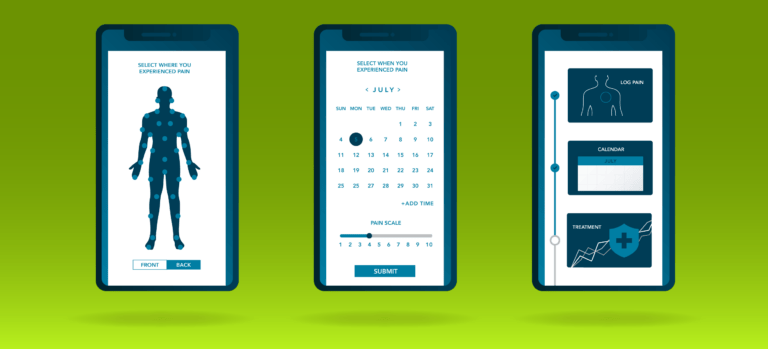Unpacking IRB Innovations for Decentralized Clinical Trials

In the blink of an eye, the world has gone digital. So many tasks which used to require going to a place and seeing a live human can now be accomplished from an app on our phones.
Even the terms “phone” and “watch” seem antiquated, when you consider that little computer in your pocket or attached to your wrist can continuously measure your blood pressure, check your circadian rhythms, or even record changes in mobility and oxygen saturation levels.
In the context of decentralized clinical trials (DCTs), we have seen an explosion of new devices and apps interacting with participants and collecting information throughout a trial, all with the participant never setting foot in a traditional clinical research site.
Ethical oversight committees (like Advarra’s institutional review board [IRB]) continue to innovate to keep pace with the rapid changes and evolution of research conduct. Study designs flexibly incorporating telepresence visits, remote home visits, and other decentralized clinical trial technologies and innovations provide improved participant engagement.
IRBs must become familiar with this technology in order to appropriately consider how such innovations impact the participant experience and a given study’s risk/benefit assessment. It’s also important for IRBs to understand how their review requirements can impact overall study efficiencies.
This blog highlights how IRBs can simplify review of electronic patient reported outcome (ePRO) and electronic clinical outcome assessment (eCOA) materials to streamline study startup without impacting the review quality. One specific innovation Advarra has adopted in the IRB review process leveraged flexibility in the FDA and OHRP regulations to save sponsors potentially weeks off their startup time while maintaining the same level of protections for human participants in trials.
What is this innovation? Advarra no longer routinely requires sponsors to provide screenshots of the finalized eCOA/ePRO applications used in a clinical trial. While this may seem like a small thing, it can impact the advancement of completing multicenter trials by days or even weeks.
Why do Some IRBs Require Final Screenshots for eCOA/ePRO Applications?
Over a decade ago, the Food and Drug Administration (FDA) released guidance to IRBs implying they should review the final content and presentation for eConsent situations. At the time, many IRBs adopted a similar “final screenshot review” process for eCOA and ePRO, since FDA mentioned screenshots as their specific example in the guidance.
FDA guidance left the door open for other review options and methods. However, most IRBs latched on to the specific example of reviewing screenshots since that option was known to be agreeable to FDA, even though it was not the most efficient process for review.
Then, during the COVID-19 pandemic, FDA made it clear the agency supports DCT technology adoption and encouraged the research community to innovate in order to keep clinical investigations running during the public health emergency.
A Flexible Alternative
The IRB is charged with reviewing the content of materials presented to participants, including advertisements, consent forms, questionnaires, diaries, and patient-reported outcomes. They must ensure everything is consistent with the protocol and nothing unduly influences a participant to enroll or stay enrolled in the trial.
The IRB’s expectation is the content the participant receives via the eCOA/ePRO platform is the same text and information flow approved by the IRB. IRBs do not really need to see the final product – they can review PDF, Word, or spreadsheet representations of the content and information flows to understand how the content will be delivered to the participant. No final screenshots are required to meet this goal.
How Does Providing the IRB Complete and Final Screenshots Slow Clinical Trials?
In cases where there may be multiple device types or innovative new “bring your own device” strategies, producing screenshots is time consuming. And if there is an amendment to the text, implementing those changes and then producing final screenshots for review can potentially delay the trial further.
“Lack of operational flexibility in the startup process for clinical trials has created historical bottlenecks when expediting trial conduct,” Mo Ali, Chief Domain Expert at Medable Inc. said. “This is further amplified when you introduce novel modalities and digital technologies for review and acceptance. A streamlined approach is needed to ensure the review of novel clinical trial models that will leverage digital technologies across stakeholders to deliver study assessments, while still maintaining a focus on ICH/GCP principles and providing enhanced data integrity and increased patient safety.
“Medable believes technology can help elevate and resolve this issue and is an advocate and supporter of key innovative processes and solutions that would help achieve this outcome for faster trial delivery for patients everywhere,” he said. “The landscape for operations is rapidly changing, and all stakeholders need to ensure that a dynamic understanding for clinical trial start up and launch is recognized for success within this space.”
What Should Sponsors Submit to the IRB Instead of Screenshots?
When determining what to submit to the IRB, keep in mind the IRB must be confident the content they are reviewing (and ostensibly approving) will be the same content the participant sees in their eCOA/ePRO systems. One way to do this is, of course, sending screenshots of the end product. In some cases, this might be the easiest option if the eCOA/ePRO is short or only on a limited number of devices.
Alternatively, instead of requiring screenshots to show the IRB what the final content looks like, some IRBs and sponsors may allow researchers to provide the content in any appropriate format. However, in these more flexible situations, the IRB must receive sufficient detail to review the intent of the content and understand how the content is presented – i.e., researchers must provide a description of skip pattern logic.
Keep in mind plans need to be sufficiently detailed so the IRB can determine with confidence the approved content is the same content the participant sees in their eCOA/ePRO systems. Of course, just like clinical trial protocols, eCOA and ePRO documents can be updated and amended during the conduct of the trial. When these changes occur, you must get IRB approval of the new process before implementing.
Many IRB submission systems and forms ask the submitter to upload screenshots for eCOA and ePRO documents. We would expect all accredited IRBs would adopt this innovation and no longer require the final screenshots.
How do we Efficiently Adopt this new Process?
New technologies are coming at us quickly. DCT technology had expanded rapidly, and IRBs must react to keep pace with the new applications and tools while at the same time protecting participants and maintaining regulatory compliance.
Willie Muehlhausen, Partner at SAFIRA, said from initial discussions, it took about seven years and “a village” to progress to the opportunities they see today.
“We cannot afford, patients cannot afford, to wait another seven years to broadly adopt and implement the new process,” Muehlhausen said. “Innovation is a team sport, and in a pre-competitive collaborative environment we will be able to, and we must set new standards for eCOA IRB/EC submission. It will take another ‘village’s’ effort and determination to communicate and push adoption. However, we have a rare opportunity for sponsors, CROs, technology partners, and IRBs/ECs to work together to improve the current process without adding to the project budgets and to significantly reduce setup timelines.”
Continuous Innovation
Anyone involved with clinical research knows the process of conducting a clinical trial requires a lot of planning, protocols, operating procedures, and processes. It is a complicated process, and must always protect the people who volunteer to participate. The team at Advarra will continue to adopt innovations that are compliant with the regulations and promote flexibility without losing sight of the most important constituent in the entire process, our research participants. We encourage our industry colleagues to do the same.
Special thank you to Mo Ali from Medable and Willie Muehlhausen from SAFIRA Partners for contributing to this article.



